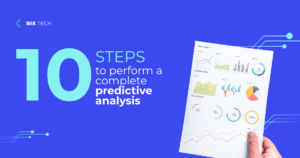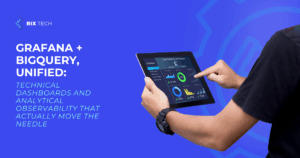Data Analyst vs. Data Scientist: Understanding the Drivers of Business Growth

Sales Development Representative and excited about connecting people
In today’s digital landscape, businesses across the globe are leveraging data at an unprecedented scale. From shaping strategic decisions to uncovering new opportunities for innovation, data has become the lifeblood of modern organizations. As a result, data-driven roles have surged in demand, with two of the most prominent being the data analyst and the data scientist. While these professionals share a passion for extracting value from information, their responsibilities, skillsets, and impact on business outcomes differ in meaningful ways.
If you’re a business leader aiming to strengthen your analytics team—or an aspiring data professional seeking your ideal career path—it’s crucial to grasp the unique roles these positions play. In this guide, we’ll break down what sets data analysts and data scientists apart, explore their day-to-day impact, and discuss how they collectively drive organizations forward.
What Does a Data Analyst Do?
Key Responsibilities
A data analyst acts as the bridge between raw information and actionable business insights. Their core role revolves around gathering, cleaning, and interpreting data to help organizations answer specific, well-defined questions. Whether it’s identifying sales trends, monitoring customer engagement, or tracking operational efficiency, data analysts turn numbers into narratives that inform decision-making.
Collaboration is central to this position—data analysts often partner with various departments such as marketing, finance, or product development to ensure that insights are tailored to the unique needs of each team.
Common Tools and Techniques
To transform data into business value, analysts rely on a suite of robust tools and technologies:
- SQL: For querying and managing relational databases.
- Excel or Google Sheets: For manipulating, organizing, and presenting data.
- Data Visualization Platforms: Tools like Tableau and Power BI help analysts create interactive dashboards and compelling visual reports.
- Programming Languages: Python and R are used for more complex statistical analyses and data wrangling.
- Data Cleaning Tools: Utilities like OpenRefine streamline the cleaning and transformation of datasets.
These tools empower data analysts to quickly spot trends, highlight anomalies, and communicate findings clearly to stakeholders.
Essential Skills and Competencies
A successful data analyst combines technical prowess with business savvy. Key competencies include:
- Proficiency in SQL and spreadsheet tools
- Data wrangling and data modeling expertise
- Fluency in data visualization techniques
- Strong understanding of statistical concepts
- Critical thinking and problem-solving
- Effective presentation and communication abilities
- Business acumen for translating analysis into actionable recommendations
Data analysts are also expected to keep dashboards and reports up-to-date, ensuring decision-makers always have access to the latest insights.
Scope and Deliverables
The work of a data analyst is typically project-based, focusing on providing answers to well-scoped business questions using available datasets. Instead of building new data models from scratch, analysts extract meaningful insights from existing information. Their deliverables often include recurring reports, dashboards, and presentations that highlight key performance indicators (KPIs) and support ongoing business strategies.
For a deeper dive into how analytics supports business outcomes, check out our guide on business intelligence transforming data into strategic insights.
What is a Data Scientist’s Role?
Key Responsibilities
Data scientists take data analysis to the next level, using advanced programming, statistical modeling, and machine learning to uncover hidden patterns and predict future trends. Unlike analysts, who focus on solving predefined problems, data scientists explore open-ended questions: “What will happen next?” or “How can we optimize this process automatically?”
These professionals develop predictive models, design algorithms, and create data-driven solutions that can adapt and evolve over time. Their work extends to forecasting business trends, designing experiments, and building intelligent systems that support long-term growth.
Tools and Technologies
Data scientists work with a broader and often more sophisticated toolkit, including:
- Python, R, and Jupyter Notebooks: For statistical analysis, machine learning, and data visualization.
- Machine Learning Frameworks: TensorFlow, PyTorch, and scikit-learn for building and training models.
- SQL and NoSQL Databases: To manage both structured and unstructured data.
- Cloud Platforms: AWS, Google Cloud, and Azure for scalable data processing and deployment.
- API Integration: For automating data pipelines and connecting with external data sources.
Their toolkit enables them to experiment with new approaches and deliver innovative solutions that go beyond traditional analytics.
Core Skills and Competencies
To thrive as a data scientist, individuals must blend technical expertise with creative problem-solving. Key skills include:
- Advanced programming and statistical modeling
- Expertise in machine learning algorithms and frameworks
- Ability to work with unstructured data (text, images, audio, video)
- Experience in designing and running experiments (e.g., A/B testing)
- Strong data engineering and automation capabilities
- Excellent communication to translate technical findings into business impact
Data scientists are often called upon to produce machine learning models, predictive analytics, and customized AI solutions that address complex or ambiguous business needs.
Scope of Work and Deliverables
While data analysts focus on describing what has happened, data scientists are tasked with predicting what could happen next. Their deliverables typically include predictive models, recommendation systems, and AI-powered applications that can transform business operations. By analyzing both structured and unstructured data, data scientists help organizations anticipate market shifts and stay ahead of the curve.
If you’re curious about how artificial intelligence is changing the business landscape, explore our article on the power of AI for business growth.
Data Analyst vs. Data Scientist: The Key Differences
Scope of Work
- Data Analysts: Focus on descriptive analytics—answering questions like “what happened?” and “why?” to support immediate business decisions.
- Data Scientists: Emphasize predictive and prescriptive analytics—determining “what will happen?” and “how can we influence this outcome?” to shape long-term strategy.
Tools and Methods
- Data Analysts: Rely heavily on business intelligence platforms, SQL, and data visualization tools for structured data.
- Data Scientists: Use advanced programming, machine learning frameworks, and cloud-based tools to handle both structured and unstructured data, enabling more complex modeling and automation.
Data Complexity
- Data Analysts: Primarily handle structured data stored in relational databases.
- Data Scientists: Manage both structured and unstructured data, including text, images, and other nontraditional formats.
Business Interaction
- Data Analysts: Frequently collaborate with business units to monitor KPIs and deliver operational insights.
- Data Scientists: Work closely with leadership to drive innovation, develop new products, and uncover future growth opportunities through experimentation and advanced analytics.
Which Role Drives Your Business Forward?
Both data analysts and data scientists are vital to building a robust, data-driven organization. Data analysts deliver the critical insights that help teams react quickly and optimize performance, while data scientists unlock new potential by forecasting trends and creating solutions that propel the business into the future.
Choosing the right mix of talent depends on your organization’s needs. Are you looking to answer targeted business questions and improve day-to-day operations? Or do you want to innovate, automate, and prepare for what’s next? Many successful companies invest in both roles, ensuring they have the analytical muscle to meet today’s challenges—and tomorrow’s opportunities.
If you’re interested in building a high-impact data team or exploring the latest trends in data analytics, don’t miss our comprehensive overview of data science’s revolutionary impact on modern business.
Ready to harness the full power of your data? Whether you’re assembling your analytics team or planning your next big data project, understanding the distinction between data analysts and data scientists is the first step to unlocking actionable insights and sustainable growth.









